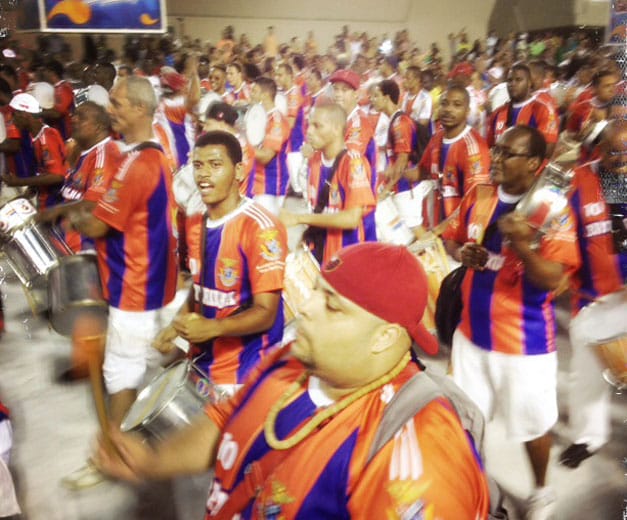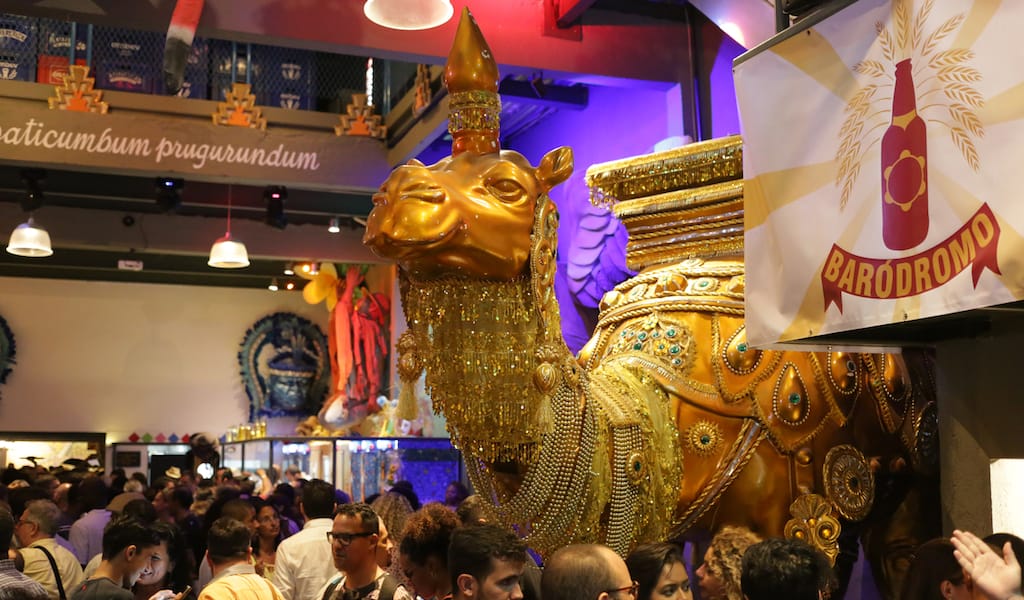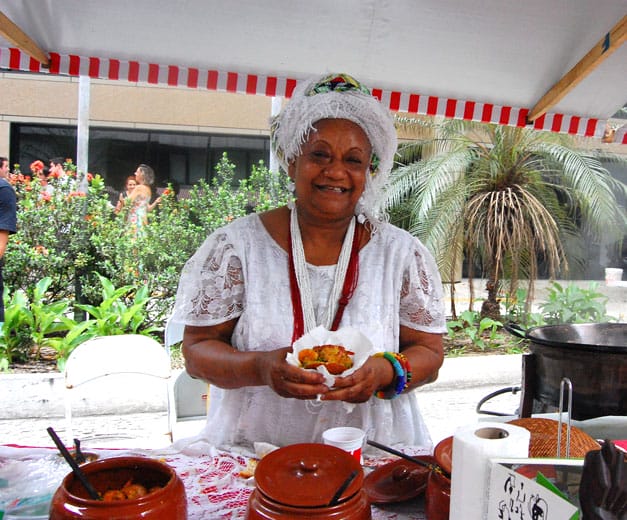Carnival in Brazil can be traced back to the 17th century, when the colonial-era population threw street parties, collectively called the entrudo, which involved pelting each other with lemon-scented water. (The governor of Rio de Janeiro tried to ban such raucousness in 1604, but the party lived on.) Throughout the colonial period, Brazil’s lower classes and slaves were the protagonists of street carnival, often imitating the dress and mannerisms of the elite. The entrudo continued, with irreverent (or was it inebriated?) revelers sometimes substituting urine and feces for the scented water in the spirited street parties.
Little has changed since. Carnival continues to be Rio’s sweatiest, smelliest, liveliest and most lubricated occasion. Some will tell you that it’s the city’s most democratic moment, where rich and poor, favelado and asfalto, black, white, moreno and gringo all come together, though we cautiously avoid such romanticization of a city that is still very much divided by class.
In fact, Carnival is still split in two: the event proper and carnaval de rua, which extends for weeks before the holiday itself. Carnival technically is the day before Ash Wednesday – March 4 this year – but the parades of samba schools in the sambódromo (samba stadium) take place all night long from the Friday to Monday before, with the most competitive schools parading on the final two days. Carnaval de rua, on the other hand, is the contemporary descendant of the entrudo. It’s made up of blocos (themed party blocks), which can be centered on anything from a samba band to an NGO to mental health patients from a particular hospital. Cariocas don’t take these street parties lightly; they arrive as early as 8 a.m., and there are no fewer than 457 blocos registered with the city government this year.
Here are our dicas (tips) for eating and drinking your way through what, despite all the city’s attempts to regulate and register it, is really still just a city-wide entrudo:
Sacolé de cachaça e frutas
A most efficient and tasty way to drink and stay cool in the summer heat here, the sacolé is a popsicle in a small plastic bag with fruit juice and cachaça, the beloved Brazilian spirit. Which brings us to our next point:
Beer and public toilets
One is as omnipresent as the other is lacking. Beer is cheap and plentiful from vendors on the street, and few foliões (partygoers) will go for long in partaking without becoming apertado (literally “tight,” a reference to one’s bladder weighing heavily). As gringo folião Andrew Fishman has noted, the sacolé de cachaça e frutas is far gentler on the bladder, especially keeping in mind that public urination can and will be punished by authorities.
Early drinking
Blocos are largely a daytime event, treated like a substitute for going to work by cariocas. If you see a local with a beer in hand at 8 a.m., it’s not a faux pas. (Nor is it one for you to follow suit.)
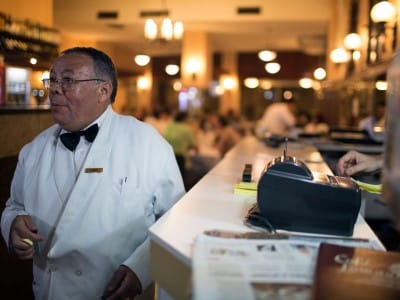 Café Lamas
Café Lamas
The Culinary Backstreets favorite is all the more in swing at this time of year. Reliably open until 3 a.m. during the whole event, it’s where the hardiest foliões go after a day of blocos. Do not miss the creme de abacate com liquor de cacau (avocado ice cream with cocoa liqueur).
Fanny pack
Called pochette (a nod to the French word for pocket) or just porta-treco (transports-stuff), the fanny pack is just as brega (tacky) here, but also more acceptable. It frees your hands for food and drink and is far safer in a street crowd than keeping belongings in your pocket (don’t do that!). Apropos of our recent post on food idioms, a French-Brazilian source tells us that a fanny pack in France is not called a pochette but – we love this – a banana.
Engov
The Brazilian hangover pill. Take one before and one after drinking. Brazilians swear by it. We think it’s at least better than many of the other pills making their way around Rio’s streets during Carnival.
(top photo by Yigal Schleifer, above photo by Jimmy Chalk)
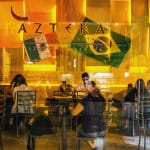 December 23, 2015 Best Bites 2015
December 23, 2015 Best Bites 2015
Editor's note: To give 2015 a proper send-off, we're taking a look back at all our […] Posted in Rio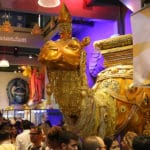 October 31, 2017 Baródromo
October 31, 2017 Baródromo
Carnival in Rio is one of the world’s best parties, and for good reason. There are the […] Posted in Rio February 13, 2015 Rio’s First Gastro Bloco
February 13, 2015 Rio’s First Gastro Bloco
For Carnival in Rio, new blocos, or free street parties, are born every year when […] Posted in Rio
Published on February 26, 2014
Related stories
December 23, 2015
Rio | By Culinary Backstreets
RioEditor's note: To give 2015 a proper send-off, we're taking a look back at all our favorite eating experiences of the year. Tasty vegan chocolate cupcake was an oxymoron in these parts until Prana Cozinha Vegetariana came around. It took no time for Prana to become the hot spot on the natureba veggie-hunter circuit in…
October 31, 2017
RioCarnival in Rio is one of the world’s best parties, and for good reason. There are the extravagant costumes, the sweaty entertainers and revelers dancing to roaring samba music, and, most importantly, free flowing alcohol: Public inebriation, whether from drinking cheap beer or slurping spiked popsicles, is heavily encouraged. While nothing can top this pre-Lent…
February 13, 2015
RioFor Carnival in Rio, new blocos, or free street parties, are born every year when creative friends put their heads together to dream up a theme and a combination of musicians that will tempt partygoers for a magical few hours. New blocos publicize and build momentum via open “rehearsals” in the weeks leading up to Carnival…







































